BC’s Highway of Tears, Highway 16
I don’t often write about negative things. I try to avoid negative things as much as possible, and I don’t like to pass any on. But this is a subject that I’ve been following for many years, has been in my face during my last 2 long road trips in particular, and there’s a remote chance that passing the information on may even help keep someone safe.
The Highway of Tears is Highway 16, the Yellowhead Highway, a highway that crosses 4 provinces. It runs across central British Columbia as a 2-lane paved road, from Tete Jaune Cache in the Rocky Mountains to the east, to Prince Rupert on the west coast, a distance of 990 kilometers (615 miles) (see a map). Centred along this route, there have been many unsolved murders and disappearances of people between 1969 and 2011. All, or almost all according to some agencies, have been young women, and a high percentage of them have been Native. Different agencies and organizations disagree on the number of people – officially (RCMP) it’s 18, but 32 were identified in a ‘Take Back the Highway’ campaign in Prince Rupert in 2005, and some First Nations leaders estimate the number could be as high as 43. The Highway of Tears Web site set up by the Carrier Sekani Family Services agency in Prince George states that many people believe that the number exceeds 40, though their “In Memory” page lists 23.
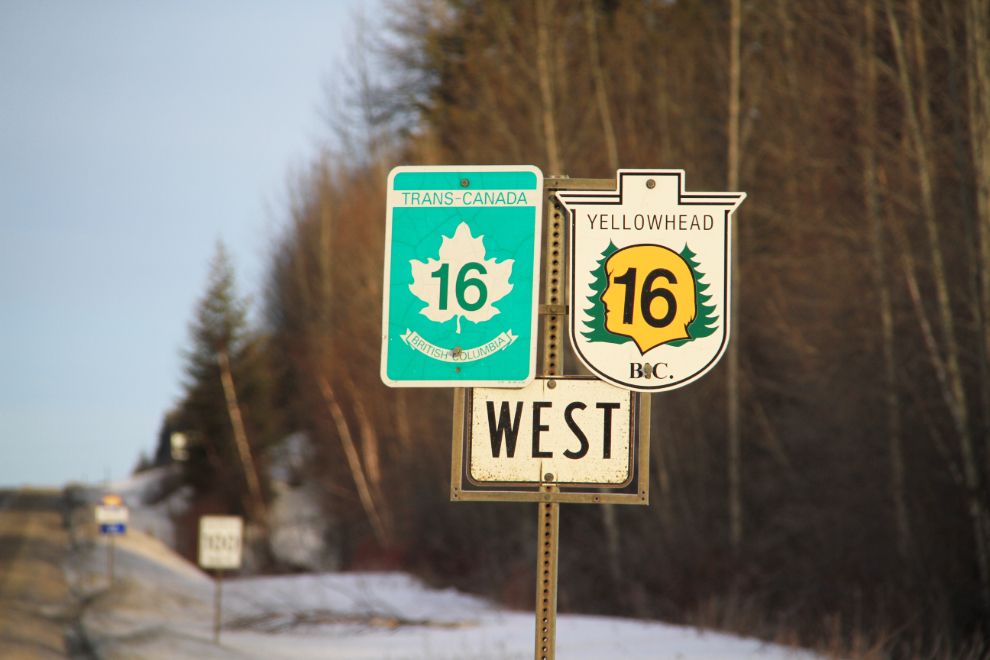
The first reminder to people who know the story is seen as soon as you enter BC at Tete Jaune Cache – this simple “No Hitch Hiking” sign that I’m sure the vast majority of people barely notice. I did a U-turn to photograph this sign in mid-March while I was driving back to Whitehorse from Hinton, Alberta, with this article in mind.
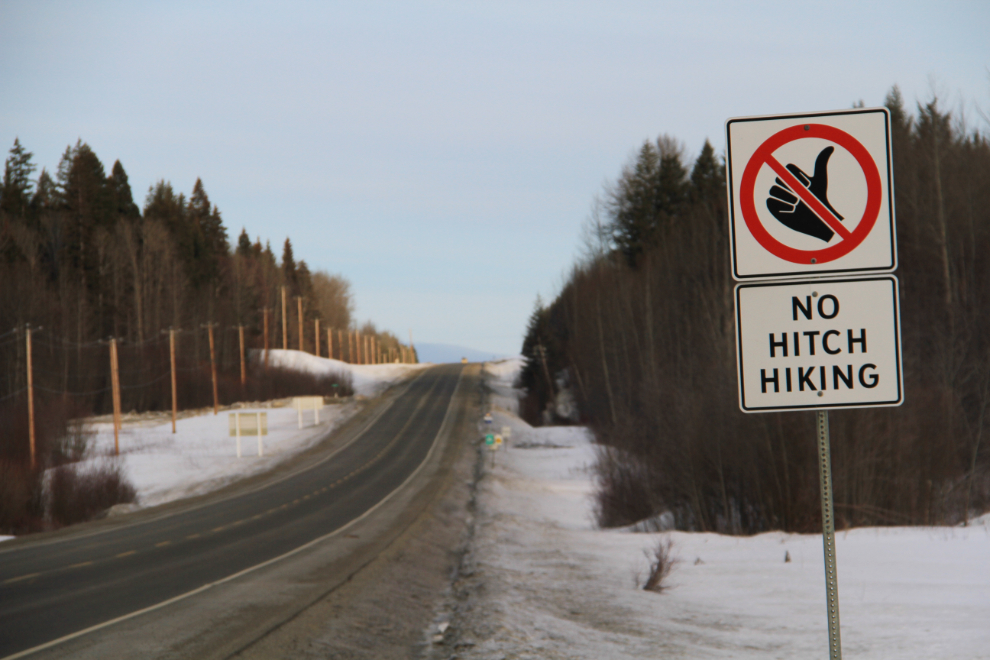
Not until you near Vanderhoof do the tears along the highway start to show. The region is inundated with billboards and signs of every type posted by the family and friends of Madison “Maddy” Scott, the last official disappearance linked to the Highway of Tears investigation. She was 20 years old when she vanished from Hogsback Lake near Vanderhoof on May 28th, 2011. Even offering a $100,000 reward hasn’t produced any results.
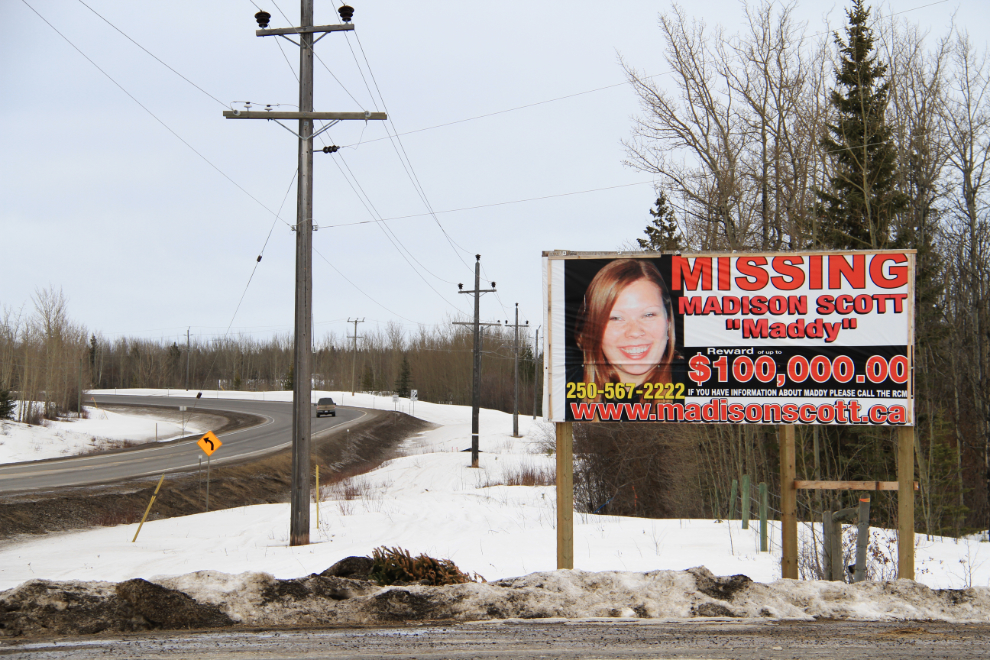
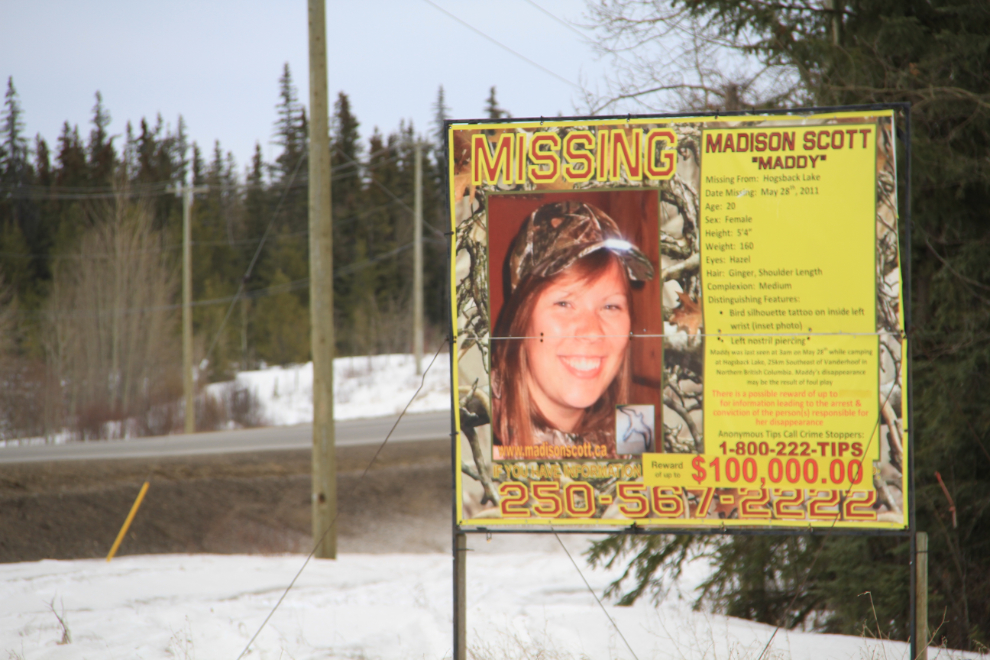
There are other billboards, too. He’s not officially part of the Highway of Tears investigation, but 28-year-old Perry Sebastian vanished from Southbank, a tiny, remote community south of Decker Lake (where this billboard was photographed) on January 5, 2012.
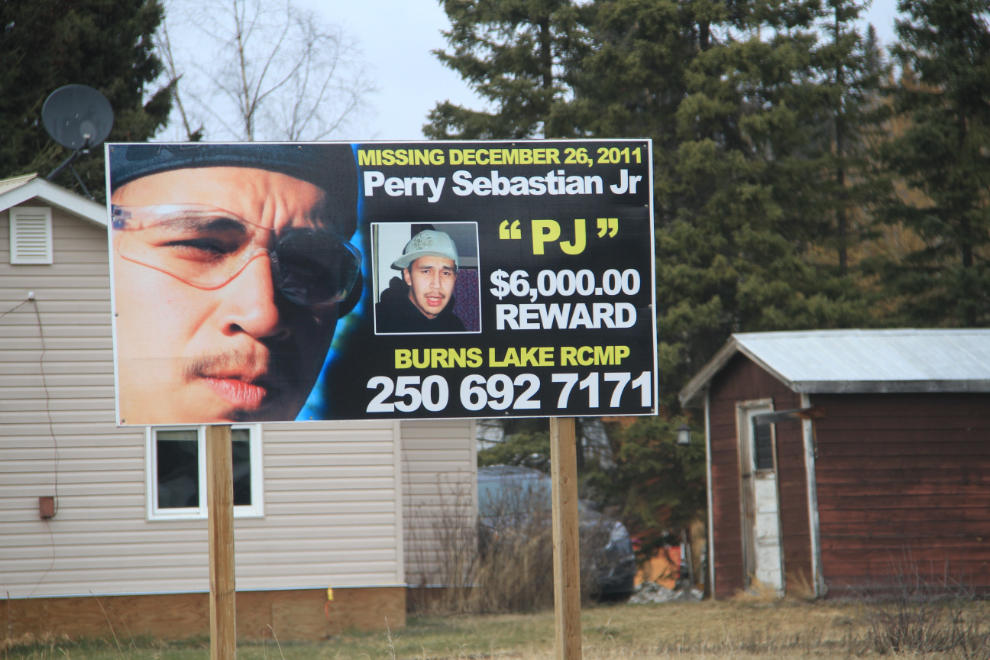
The first “Highway of Tears” billboard that I remember seeing was the one that still stands at Moricetown. Erected in 2007, it lists 3 young women – Tamara Chipman, and cousins Delphine and Cecilia Nikal. Tamara vanished in 1985 when she was 22, Delphine in 1990 when she was 16, and Cecilia in 1989 when she was 22. It’s not clear to me why these 3 women were chosen.
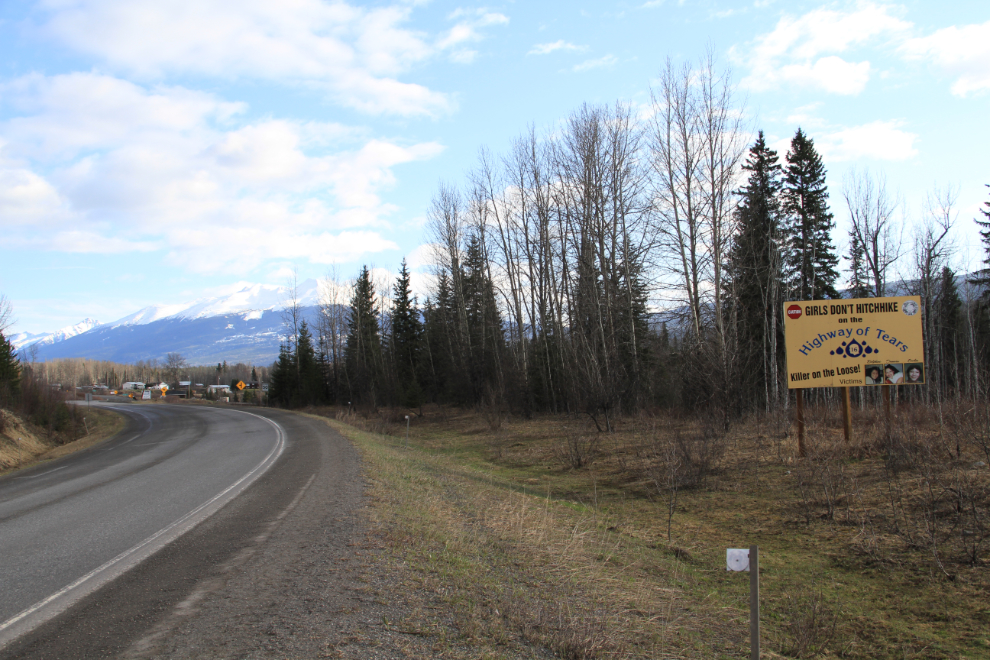
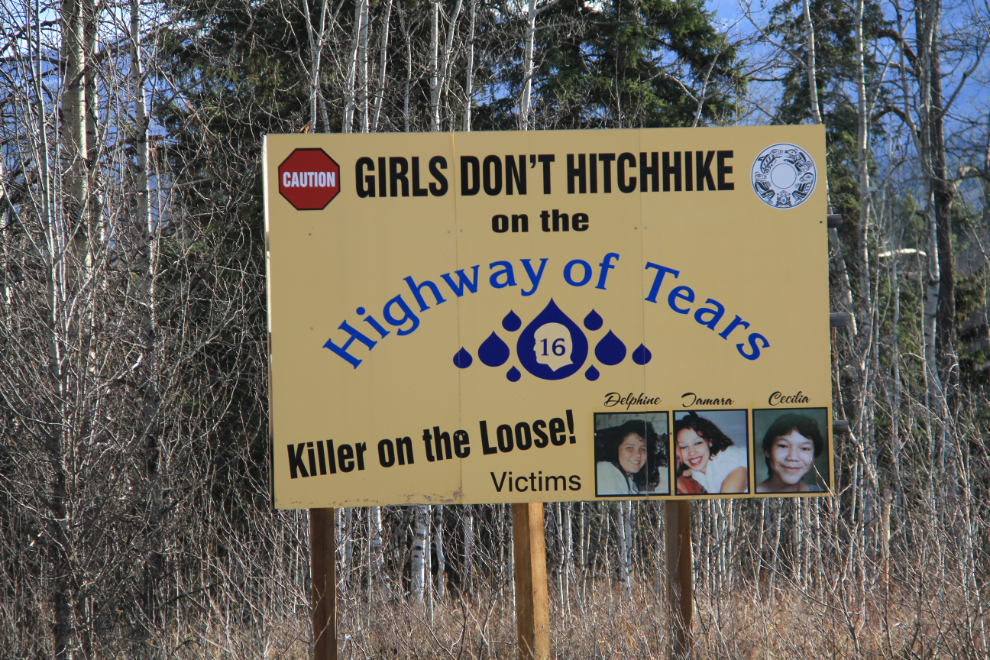
So that’s the basic Highway of Tears story that I’ve been watching for many years. There is no one-stop source for information about it, no agreement on what has happened or who has done it. Is it likely that a serial killer was/is working along the highway for 42 years (1969-2011)? I don’t know, but while you enjoy the scenery along BC Highway 16, I think it’s worth knowing about this incredibly sad story.